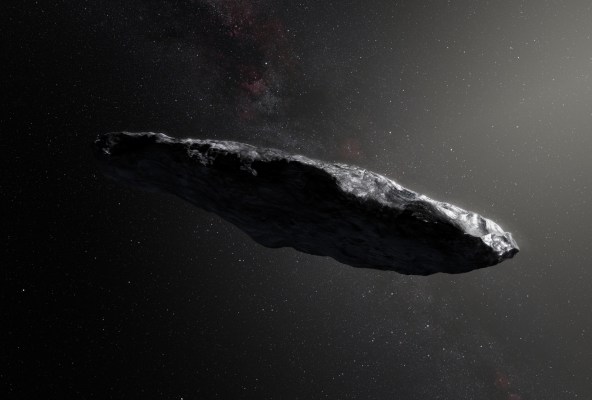Space is a big place, and mostly empty — but there’s no shortage of objects which, should they float our direction, could end life as we know it. A new national plan for detecting and handling such objects was proposed today, and it includes the possibility of nuclear strikes on the incoming asteroids and other “planetary defense missions.”
The plan, revealed and discussed this morning, is far from a joke — it’s just that the scales these threats operate at necessarily elevates the discourse to Hollywood levels.
It’s not so much “let’s do this” as “let’s figure out what we can do.” As such it has five major goals.
First, improve our ability to detect and track near-earth objects, or NEOs. We’ve been doing it for years, and projects like NEOWISE have captured an incredible amount of these objects, ranging in size from the kind that will safely burn up in orbit, to those that might cause serious damage (like the Chelyabinsk one), to proper planet-killers.
But we often hear about NEOs being detected for the first time on near-collision courses just days before approach, or even afterwards. So the report recommends looking at how existing and new programs can be utilized to better catch these objects before they become a problem.
Second, improve our knowledge of what these objects can and have done by studying and modeling them. Not just so that we know more in general, but so that in the case of a serious incoming object we know that our predictions are sound.
Third, and this is where things go a little off the rails, we need to assess and develop NEO “deflection and disruption” technologies. After all, if a planet-killer is coming our direction, we should be able to do something, right? And perhaps it shouldn’t be the very first time we’ve tried it.
The list of proposed methods sounds like it was sourced from science fiction:
This assessment should include the most mature in-space concepts — kinetic impactors, nuclear devices, and gravity tractors for deflection, and nuclear devices for disruption — as well as less mature NEO impact prevention methods.
I wasn’t aware that space nukes and gravity tractors were our most mature concepts for this kind of thing! But again, the fact is that a city-sized object approaching at a significant fraction of the speed of light is an outlandish problem that demands outlandish solutions.
 And I don’t know about you, but I’d rather we tried a space nuke once or twice on a dry run rather than do it live while Armageddon looms.
And I don’t know about you, but I’d rather we tried a space nuke once or twice on a dry run rather than do it live while Armageddon looms.
At first these assessments will be purely theoretical, of course. But in the medium and long-term NASA and others are tasked with designing actual “planetary defense missions”:
This action includes preliminary designs for a gravity tractor NEO deflection mission campaign, and for a kinetic impactor mission campaign in which the spacecraft is capable of either functioning as a kinetic impactor or delivering a nuclear explosive device. For the latter case, the spacecraft would contain all systems necessary to carry and safely employ a nuclear explosive device, but would carry a mass simulator with appropriate interfaces in place of an actual nuclear device. Designs should include reconnaissance spacecraft and methods to measure the achieved deflection.
Actual flight tests “would not incorporate an actual nuclear device, or involve any nuclear explosive testing.” Not yet, anyway. It’d just be a dry run, which serves its own purposes: “Thorough flight testing of a deflection/disruption system prior to an actual planetary defense mission would substantially decrease the risk of mission failure.”
Fourth the report says that we need to collaborate on the world stage, since of course NEO strikes don’t exactly discriminate by country. So in the first place we need to strengthen our existing partnerships with countries sharing NEO-related data or studies along these lines. We should all be looking into how a potential impact could affect our country specifically, of course, since we’re the ones here — but that data should be shared and analyzed globally.
Last, “Strengthen and Routinely Exercise NEO Impact Emergency Procedures and Action Protocols.”
In other words, asteroid drills.
But it isn’t just stuff like “here’s where Boulder residents should evacuate to in case of impact.” As the document points out, NEO impacts are a unique sort of emergency event.
Response and mitigation actions cannot be made routine to the same degree that they are for other natural disasters such as hurricanes. Rather, establishing and exercising thresholds and protocols will aid agencies in preparing options and recommending courses of action.
The report recommends exploring some realistic scenarios based on objects or situations we know to exist and seeing how they might play out — who will need to get involved? How will data be shared? Who is in charge of coordinating the agencies if it’s a domestic impact versus a foreign one? (See Shin Godzilla for a surprisingly good example of bureaucratic paralysis in the face of an unknown threat.)
It’s strange to think that we’re really contemplating these issues, but it’s a lot better than sitting on our hands waiting for the Big One to hit. You can read the rest of the recommendations here.
